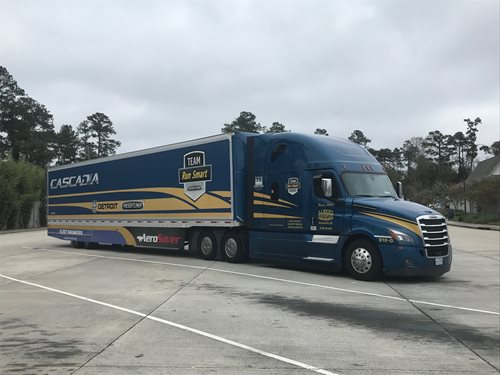
Today as many of our nation’s trucks are traveling at higher speeds than in the recent past aerodynamics becomes more important as speed increases. With each MPH increase in speed, there is a greater impact upon efficiency than the previous MPH.
Aerodynamic drag is much different than frictional loses. Frictional loses is much more of a linear line than aerodynamic drag. Aerodynamic drag quadruples each time the speed is doubled. I have encountered this steep bell curve during Project 70+/10. For those of you not familiar with the Project the goal is to be able to hit double-digit fuel economy while traveling speeds above 70 mph where safe and posted legal. It becomes very evident how this bell curve in regards to aerodynamics comes into play while conducting the Project. It has been fairly easy to hit double-digit fuel economy figures into the 68 to 70 mph range. I have even had pretty good success at up to 72 mph however that last three miles per hour to get to 75 has proven to be a steep climb in regards to fuel mileage.
The take away from all I have learned from Project 70+/10 is that aerodynamics becomes critically important as your road speed increases. Details that did not seemingly matter at lower speeds become monumental challenges as the rate of speed increases. As we speak I am looking for ways to improve my total truck and trailer aerodynamic package in order to reach the goals of my Project.
Click on the highlighted area to learn more about the aerodynamic bell curve